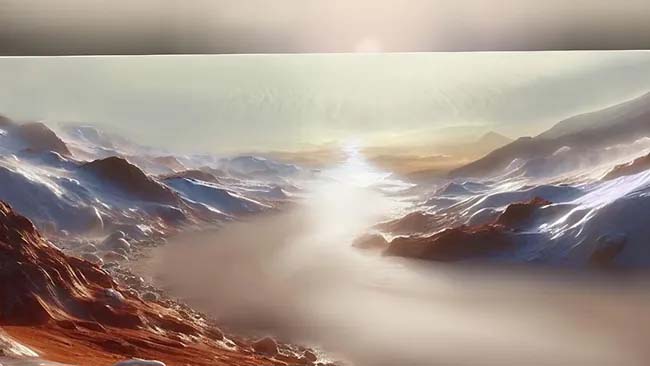Science: A single researcher may have figured out how Mars was able to support rivers and seas even after the planet cooled and the atmosphere thinned, and it’s all thanks to the cycle of water and carbon dioxide. We know from geological and mineralogical evidence that, about four billion years ago, Mars was so warm and wet that it had widespread liquid water on its surface, from rivers and lakes to vast northern seas.
This period includes two geological eras:
the Noachian, which lasted from 4.1 to 3.7 billion years ago, and the Hesperian, which lasted from 3.7 to about 3 billion years ago. The Noachian is characterized by warm conditions, but in its later stages Mars should have begun to cool as it lost its atmosphere to space. Yet evidence of river channels and seas still dates back to the end of the Noachian and the Hesperian era. Planetary scientists are puzzled by how Mars could have been moist at this time, and one theory is that the Red Planet experienced an unexplained period of global warming.
Now, however, researcher Peter Buhler of the Planetary Science Institute in Arizona may have solved the problem thanks to his modeling of the role of carbon dioxide ice freezing on the south polar cap. The model “describes the origin of major landscape features on Mars — such as the largest lake, the largest valleys and the largest esker system — in a self-consistent way,” Buhler said in a statement. “And it relies only on the process we observe today, which is the fall of carbon dioxide from the atmosphere.” Eskers are long, gravelly ridges left by flowing water, and their presence near Mars’ south pole is a big clue about how events unfolded on the Red Planet.
Usually, Buhler spends his time modeling the carbon-dioxide cycle on Mars today. During the Martian winter, a layer of carbon-dioxide ice freezes on top of the polar cap of water ice. While it is just a thin layer on the northern polar cap, the southern polar cap has much more, with a permanent layer of carbon dioxide ice up to 26 feet (8 meters) thick, which grows even more in winter. This extra carbon dioxide is usually locked up in the Martian soil, but during the Martian summer it can sublimate into the atmosphere and reach the winter pole.
